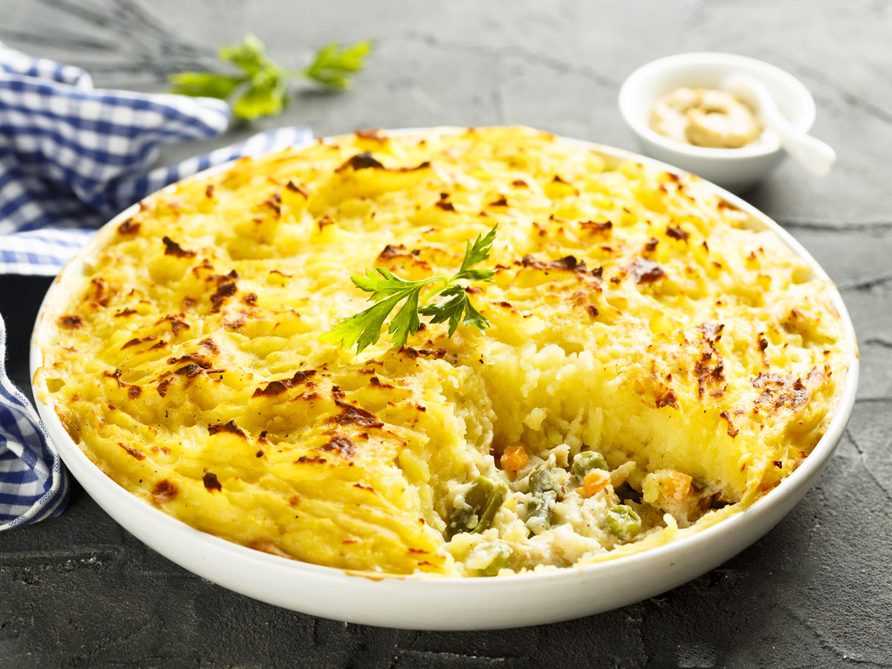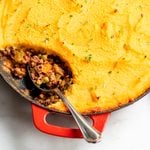Liven Up Your Fish Pot Pie With Shrimps and Mushrooms
Serve this fish pot pie with a colourful medley of steamed vegetables, such as snow or sugar snap peas, carrots and baby corn.

| Servings | Prep Time | Cook Time |
| 4servings | 15minutes | 45minutes |
| Servings | Prep Time |
| 4servings | 15minutes |
| Cook Time |
| 45minutes |
Ingredients
- 550 g potatoes peeled and cut into chunks
- 5 tbsp Greek-style yogurt
- 1 tbsp reduced-salt margarine
- 1 small onion sliced
- 400 g white fish fillets
- 2 cups low-fat milk
- 2 bay leaves
- 4 sprigs parsley
- 80 g small pasta shells
- 4 tbsp cornstarch
- 1/2 tsp mustard powder
- nutmeg freshly grated, to taste
- 120 g cooked peeled shrimp
- 80 g mushrooms thinly sliced
- 4 tbsp parsley chopped
- pepper to taste
Servings: servings
Units:
|
Ingredients
Servings: servings
Units:
|
Instructions
- Preheat the oven to 350ºF (180ºC). Place the potatoes in a saucepan, cover with boiling water and cook for 15–20 minutes or until tender. When the potatoes are done, drain them well and mash with the yogurt. Set aside and keep hot.
- Meanwhile, melt the margarine in a flameproof casserole dish, add the onion and cook gently for 5 minutes or until soft. Place the fish on top, pour over 1 3/4 cups of the milk and add the bay leaves and parsley. Cover and poach in the oven for 15 minutes or until the fish flakes easily.
- Cook the pasta in a saucepan of boiling water for 10 minutes, or according to the package instructions, until just al dente. Drain and set aside.
- Place the cornstarch and mustard in a saucepan, add the remaining milk and mix to a smooth paste. Strain the poaching milk from the fish into the saucepan, reserving the onion, and add nutmeg. Bring to a boil, stirring constantly. Reduce the heat and simmer for 5 minutes or until thick.
- Flake the fish, discarding the skin and any bones. Stir the fish, reserved onion, shrimp, mushrooms, drained pasta shells and chopped parsley into the sauce, and season with pepper. Return the mixture to the casserole dish. Spoon the mashed potatoes over the seafood mixture, spreading the potato evenly, right to the edge of the dish. Fork up the surface. Bake for about 20 minutes or until bubbling and browned. Serve hot.
Recipe Notes
Nutrients per serving: 424 calories, 42 g protein, 9 g total fat (3 g saturated fat), 130 mg cholesterol, 44 g total carbohydrate (4 g fibre), 11 g sugars, 310 mg sodium
Best Health tip: Plain yogurt is often used as an alternative to cream. In addition, yogurt provides more calcium than cream.




